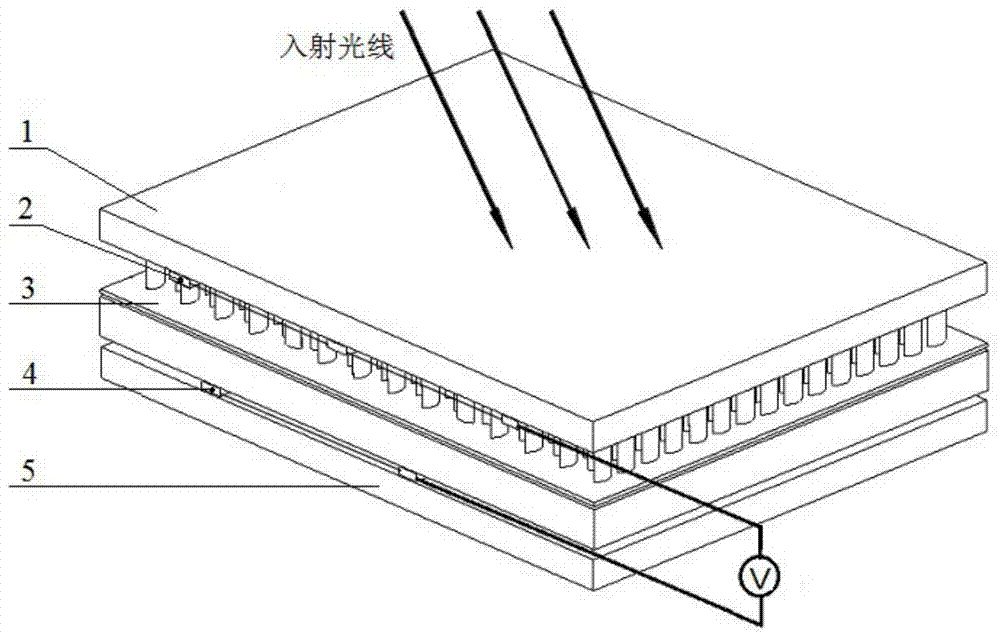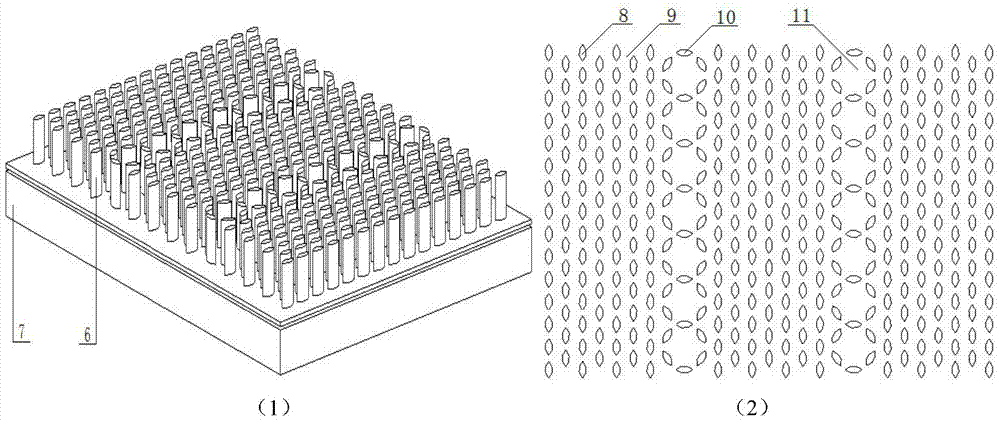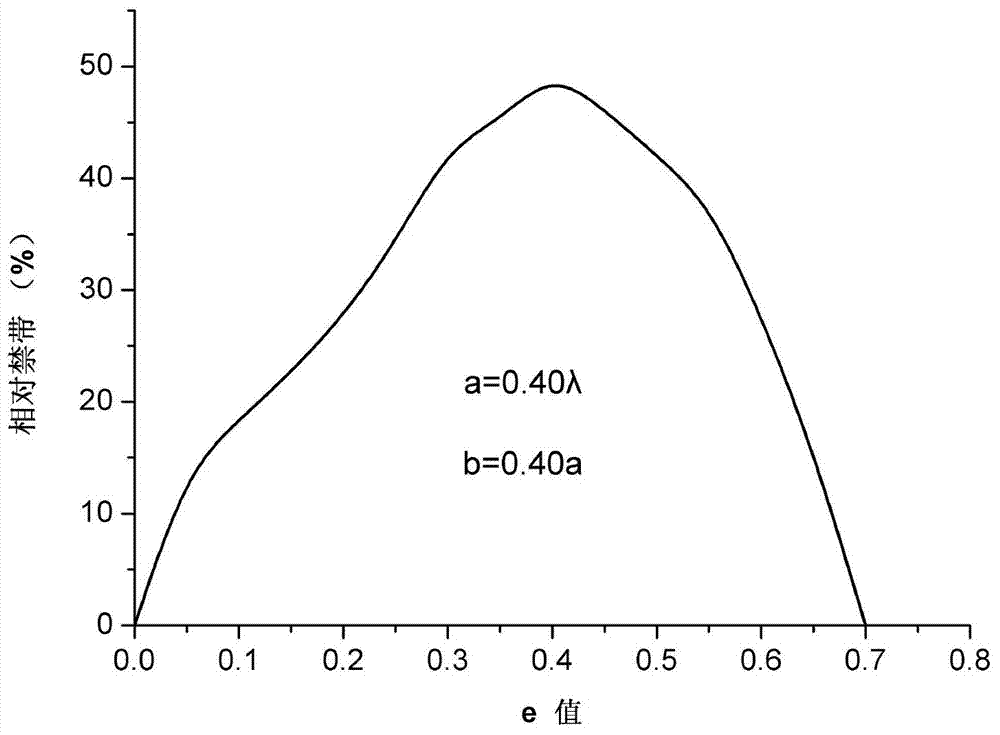Two-dimensional silicon-based micro-nano photonic crystal solar cell
A solar cell and micro-nano photonic technology, applied in the field of solar cells, can solve the problems of the combination of no band gap and slow light theory, the high cost of anti-reflection film preparation, the difficult control of the preparation process, etc., so as to increase the photoelectric conversion efficiency and improve the electrical Transmission performance, coupling of light and effect of high transmission efficiency
- Summary
- Abstract
- Description
- Claims
- Application Information
AI Technical Summary
Problems solved by technology
Method used
Image
Examples
Embodiment 1
[0033] The overall structure of this embodiment is as figure 1 As shown, the n-type silicon semiconductor 6 involved in the two-dimensional silicon-based micro-nano photonic crystal solar cell structure 3 is a structure with two substructures of forbidden band and slow light effect arranged periodically, and the scattering element of the n-type silicon semiconductor 6 adopts Circular segment, spatially arranged as a triangular lattice structure; the central wavelength of the forbidden band is set at λ=700nm, which can be obtained by the plane wave expansion method: when the central wavelength of the forbidden band is set at 700nm, the lattice constant of the structure is a=0.4 When λ=280nm, parameters b=0.4a, e=0.4, both the forbidden band and slow light have better effects; since the forbidden band of the structure is close to 50% of the central wavelength, such as image 3 As shown, the forbidden band of such a structure is between 350 and 1050nm, and this range includes not...
Embodiment 2
[0036] The overall structure of this embodiment and figure 1 same. The upper layer n-type silicon semiconductor 6 in the two-dimensional silicon-based micro-nano photonic crystal solar cell structure 3 involved in the embodiment is a structure with two substructures of forbidden band and slow light effect arranged periodically. In order to meet the large forbidden band of the structure, the scattering element adopts a circular bow shape; the spatial arrangement of the structure is a triangular lattice structure; the central wavelength of the forbidden band is set at λ=700nm, which can be obtained by the plane wave expansion method: When the central wavelength of the structure is set at 700nm, the lattice constant of the structure is a=0.375λ=262.5nm, and when the parameters b=0.42a, e=0.3, the forbidden band and slow light also have good effects; because the forbidden band of the structure is close to 43% of the center wavelength, as Figure 7 As shown, the forbidden band of...
PUM
 Login to View More
Login to View More Abstract
Description
Claims
Application Information
 Login to View More
Login to View More - R&D
- Intellectual Property
- Life Sciences
- Materials
- Tech Scout
- Unparalleled Data Quality
- Higher Quality Content
- 60% Fewer Hallucinations
Browse by: Latest US Patents, China's latest patents, Technical Efficacy Thesaurus, Application Domain, Technology Topic, Popular Technical Reports.
© 2025 PatSnap. All rights reserved.Legal|Privacy policy|Modern Slavery Act Transparency Statement|Sitemap|About US| Contact US: help@patsnap.com



